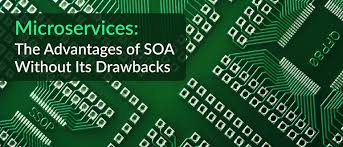Source: devops.com
Service Oriented Architecture (SOA) was the great hope of organizations decades ago when they sought to advance legacy system integration, reduce and bypass layers, and rapidly access the system of record. At the time, the existing solution was point-to-point integration, creating a brittle “spaghetti” middle layer that was hard to manage. This was replaced by SOA, which was later augmented with ESB. This fixed the spaghetti mess by creating an intermediate set of layers, which added complexity to the integration process.
Unfortunately, most IT departments with legacy systems and SOA still struggle to be as agile as needed in this ever-increasing global and digitized world.
SOA Solved Many Problems, But Not All
Today, upward of 90% of the world’s enterprise applications are monolithic. When they were created, monolithic design was the best approach available. However, as business needs evolved and the demand for greater agility intensified, developers and IT teams are considering breaking free of these monolithic architectures.
SOAs have become a hindrance, not the solution they once were.
The SOA Integration Challenge
The promise of SOA initiatives was extending the reach of core business functions while reducing the internal expenses and complexity that grew alongside monoliths. SOAs achieved these goals by breaking the core functions of a monolith into web services using protocols such as simple object access protocol (SOAP) and eXtensible markup language (XML).
SOAP was built for universal application communications. Because it’s based on XML, SOAs designed with SOAP could, in theory, be used to create an agnostic integration layer. Rather than struggling to piece together various proprietary systems, these protocols would open monoliths on different operating systems so they could work together.
This agnostic integration layer would let system administrators connect pieces of a monolith to an enterprise service bus (ESB) to achieve an agile, plug-and-play SOA. In some cases, this approach succeeded.
A great deal of “legacy SOA” still provides value. In these cases, the value the SOA provides is the behind-the-scenes server-to-server communication that mostly aids developers. When it comes to serving internal and external customers–and their rapidly changing demands–SOA isn’t always up to the task.
To achieve service integration, the ESB must oversee the messages from start to destination. This communication isn’t as simple as the SOA vendors may have promised. Consider an SOA integration within a core banking application. The message must go from the core application on the mainframe to a branch office server. If the business logic states a message is only relevant for one business day, administrators must decide whether to move it to a queue, log or disregard when the day passes. This is a common scenario for core banking applications in an SOA, but how well does it work?
In this example–and others like it–the ESB must know whether a business day has passed to make the right decision about where to send the message. Therefore, the integration requires an algorithm–meaning that ESB cannot simply rely on a universal rule for sending messages between the monolith and external integration.
When administrators introduce new business logic into the monolith integration, it turns what was supposed to be an agnostic service layer into a new application layer, increasing complexity. Instead of simply integrating the monolith into a new digital service, the enterprise ends up with a larger monolith–one that includes the mainframe and all the new integration stacks.
Despite the promises of SOA, the integration problems result in increased maintenance time, greater complexity of code and software and the continued growth (not elimination) of monolithic applications.
The first rule of effective integration is “smart end-points and dumb pipes.” Building logic and layers into the service layer breaks that rule, increases the overall complexity and adds another legacy application to your portfolio.
Bottom line: Trying to optimize the SOA approach will only result in larger monoliths.
Improving SOAs with Microservices
Using microservice architectures helps realize the original promise of SOAs, delivering the benefits of SOAs while removing many disadvantages.
For decades, CIOs have tried to transition away from monoliths by taking traditional approaches to integration, only to find they’ve doubled down on legacy investments. All these integration stacks end up coupled to legacy systems and only result in more work for the IT team–and a less agile organization.
The integration step of SOA was never intended to include business logic. Trying to force business logic into this approach leads to workarounds and extra effort just to achieve a less-than-ideal result.
The key factor is how to incorporate microservices without adverse effects. Luckily, microservices architecture can be forged from SOAs by introducing these new principles:
- Context Mapping: When replacing an existing SOA, teams must consider the size and scope of the new microservice and apply proper contextual boundaries. For example, SOAs that typically sought broad integration with digital services should be broken down into smaller domains to simplify operation.
- Shared-Nothing Architecture: Too many SOA integrations create sprawling dependencies that create complexity in the tech stack. Microservices avoid these cross-service dependencies. For those looking to move to microservices from an existing SOA, it’s important to look at the list of dependencies and work toward standalone functionality.


